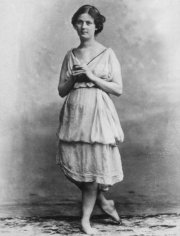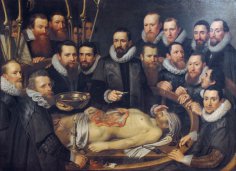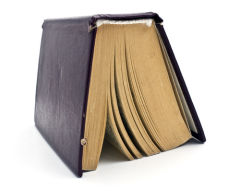
“Before I was born, my mother suffered a tragedy. She couldn't eat anything except oysters, washed down with ice-cold champagne. If people ask me when I started dancing, I answer—in the womb. Perhaps because of the oysters and champagne.”
The fates of brilliant and great women are often more complex than those of men. Perhaps because it's harder for women to gain recognition… For Russians, Isadora's name is firmly entrenched in the consciousness alongside Yesenin's. But before their meeting back in 1921, Isadora had endured much…
The little girl was sent to school at the age of five. For a long time, she felt like an outsider among her well-off classmates. And at thirteen, she ran away. Then she took up dancing seriously.
At just eighteen, Duncan almost married her admirer—an elderly, red-haired man who was completely unsuitable as a husband for a young dancer. However, many years and many twists and turns lay ahead before the only marriage of her life.
Her dance ideas, innovative in nature, were completely out of step with the ballet school of the time. She became a sort of “appetizer,” an exotica at social events: she danced barefoot, which shocked the audience immensely.
Then came touring and a new love. Romeo, as she called Oscar Berezhi, to whom she had already arranged an engagement. But he chose his career over hers, and the engagement broke off, along with Duncan's fairytale dreams of a happy family life.
Later, Gordon Craig crossed Isadora's path. And again, a wave of emotion, true love, and the fruit of that love—a girl, Didra.
Duncan's name was already celebrated in many countries. She was a recognized star, a top-class dancer. And along with her career success came a new romantic disappointment. Craig married another woman, thus proving Isadora's point that love cannot last forever. Her son, Patrick, born to a wealthy suitor, brought a new wave of happiness to Duncan's restless heart.
In January 1913, the dancer went on tour to Russia. It was during this time that she began experiencing visions: sometimes she heard a funeral march, sometimes she was haunted by a constant premonition of death. The final straw came when she saw two children's coffins among the snowdrifts. Isadora immediately went to join her children in Paris. After meeting their mother, Didra and Patrick were sent to Versailles. And on the way, the accident occurred that would change Duncan's life forever. She lost both her children…
One day, while walking along the shore, she saw her babies: holding hands, they slowly waded into the water and disappeared. Isadora threw herself on the ground and burst into tears. A young man leaned over her. “Save me… Save my sanity. Give me a child,” Duncan whispered. The brilliant artist later gave birth to another child with this same young man, but the baby was destined to live only a few days.
And so it was that same year, 1921, thanks in part to which we now know Isadora's name. “Angel,” she whispered when she first saw Yesenin. “Devil,” she added later, with her characteristic accent.
And that's exactly how it turned out: Yesenin was both an angel and a demon to Duncan. He would become infinitely tender, whisper words of love to her, read poetry, then shout, and beat her for no apparent reason…
The poet and the dancer's marriage was short-lived. They were divorced.
Duncan's last love was the young Russian pianist Viktor Serov. Besides their shared love of music, they bonded over the fact that he was one of the few people she liked and with whom she could talk about her life in Russia.
Jealousy once drove Duncan to the brink of suicide, which failed. But just a few days later, Isadora, wearing her red scarf, went for a drive… The scarf caught in the wheel, caught Duncan's neck, and broke it…
And so, in one movement, the life of the great dancer, the Muse of many famous men, the magnificent woman, was tied in a knot…





